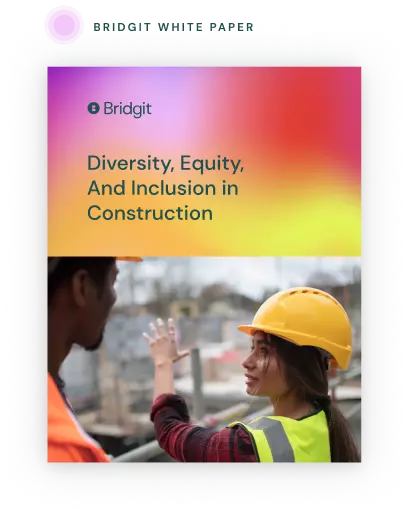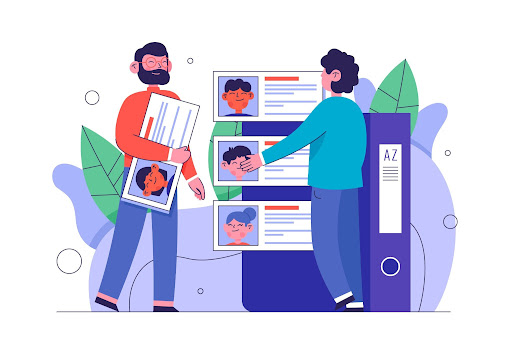Having strategic human resource planning processes is essential for success in construction. Keep reading to learn more about what these processes entail and how your company can implement them.
Table of Contents
The importance of human resource planning
Labor is among the most vital resources any construction company can have. Labor can also be very costly, accounting for between 20% and 40% of any given project’s budget. Given labor’s significance, it’s essential that construction companies take the proper steps to ensure human resources are used efficiently.
Compounding this importance is the fact that workers are not like pieces of equipment or other inanimate resources. They have human needs, quirks, and personality traits that need to be taken into account during the strategic human resource planning process.
This is especially true given the shortage of skilled construction workers. Smart companies recognize that strategic human resource planning is a crucial tool for maintaining a capable workforce. Money spent on this planning should therefore not be seen as a cost but rather an investment.
Objectives of human resource planning
Next, let’s discuss the objectives of human resource planning.
Understanding your organization’s current capacity
Before you spend resources bidding on additional projects, you’d do well to figure out whether your company has the capacity to take on more work. This is a key objective of the human resource planning process. Done right, it will leave key stakeholders in your organization aware of the current workforce’s limits.
Forecasting and better preparing for future needs
No construction company’s workforce needs are static. Rather, they change constantly. Staying ahead of the curve can often mean the difference between maintaining positive cash flow and falling short. Consequently, much time is spent on forecasting during the human resource planning process.
Making better use of current employees
As mentioned earlier, labor is among the biggest costs associated with operating a construction company. Utilizing your workforce properly is consequently very important for reaping a positive return on your labor-related investments.
Equipping your company with the tools to navigate change confidently
The construction industry is constantly changing. Good human resource planning will give your organization the data and tools needed to adapt, whether it be through employee progression plans or some other mechanism.
Achieving important organizational goals
Human resource planning has a direct impact on your company’s bottom line. Engaging in this process (and measuring its outcomes effectively) is consequently a valuable activity.

Addressing diversity, equity, and inclusion in construction with empathy
Download our white paper to see the industry’s challenges in attracting and retaining talent from historically underrepresented populations.
Steps in human resource planning processes
With the importance of human resource planning – and its key objectives – in mind, let’s now discuss the steps involved in these processes.
1. Evaluate your organization’s current workforce capabilities
The first step in strategic human resource planning is to evaluate your company’s current workforce and its capabilities. One key metric when measuring this is known as your workforce utilization rate, which indicates the amount of time your laborers spend working on projects relative to the amount of time they’re on the clock.
If your workforce utilization rate is constantly very high, this may indicate that your company would struggle with additional projects. If your workforce utilization rate is constantly very low, on the other hand, you may be making poor use of your laborers.
Not sure how to measure your construction company’s workforce utilization rate? That’s where workforce intelligence tools such as Bridgit Bench come in handy. These tools make it possible to track your workforce utilization rate with ease.
2. Forecast your organization’s future workforce needs
Knowing your organization’s current workforce capacity and utilization rate is powerful. However, truly proactive construction workforce management professionals go one step further and strive to understand how their workforce might handle future needs as well.
As mentioned in the previous step, this can partially be done using current workforce utilization rates as a reference. Good workforce management tools also include forecasting functionality that looks intelligently at a variety of metrics to arrive at reliable models.
3. Conduct a gap analysis
Conducting a gap analysis is a key part of construction workforce planning. It entails evaluating whether any gaps exist between your company’s current labor supply, its current needs, and its projected needs.
While the need for a gap analysis becomes quite evident when a company isn’t functioning well, you don’t need to wait until things reach that point. Being proactive (i.e. by conducting gap analyses on a set schedule, regardless of the company’s performance) can put your construction company ahead of many potential issues.
4. Executing a plan based on your metrics and analysis
Collecting and analyzing data is important. The most significant progress is made, however, when you take action based on what your findings have indicated. This will look different from company to company (and from situation to situation).
Potential courses of action might include:
- hiring new workers
- letting go of workers that may not be a good fit based on the company’s future
- implementing strategic employee progression plans
- ensuring employees have the tools and training they need to perform at the expected level
5. Monitor the results and collect feedback from key stakeholders
Once you’ve implemented a human resource plan, be sure to measure its effectiveness. This is another area in which having a robust workforce management tool comes in handy. Software such as Bridgit Bench can help you continually track workforce performance as opposed to merely having that capability when you make a conscious decision to activate it.
In this way, the human resource planning process is often circular. As you evaluate the results of your strategy in this step, you may identify the need to loop back to Step 1 and move through the entire process again.
Bridgit Bench is the human resource planning software of choice for construction management professionals
Bridgit Bench is a construction resource management tool packed with features that facilitate human resource planning. These features include:
- pursuit tracking
- labor scheduling
- remote planning
- forecasting
- reporting
- custom API integrations (i.e. with other analytics, accounting, and construction management tools)
- project and human resource database management
Learn more about Bridgit Bench or receive a demo of our software.
Think your workforce planning meetings could be more productive?
Download our ebook to learn how to run efficient, effective workforce planning meetings with your team.



